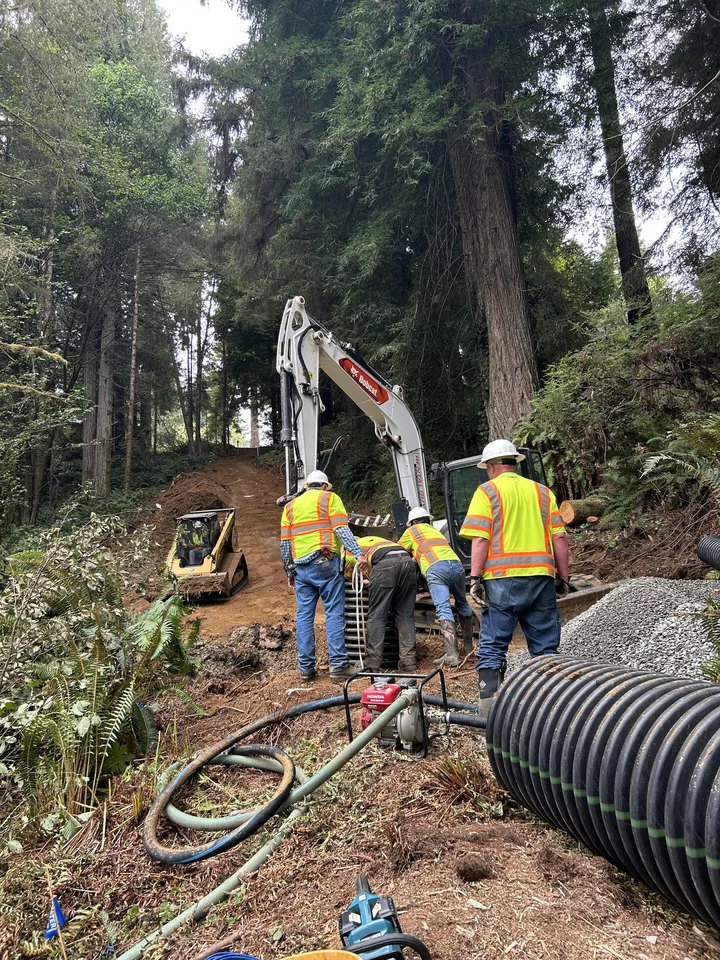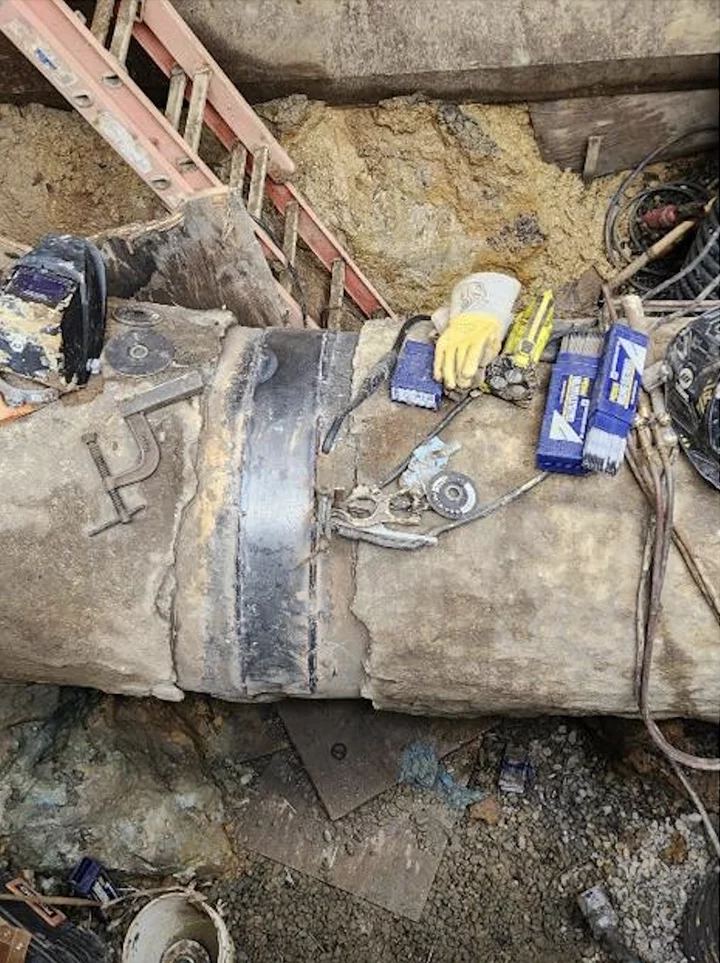A crew installs a dewatering well at the site of a transmission pipeline leak discovered last month. | Photos courtesy the HBMWD.
###
PREVIOUSLY
- The Water District Will Have to Temporarily Shut Down an Important Main Soon, but They Aren’t Expecting it to Affect Customers
- Tomorrow’s the Day of No Water Main! Everything Should be Cool, but Maybe Go Easy on the Wet Stuff
###
A mechanical failure during last week’s emergency repair work to a damaged Humboldt Bay Municipal Water District (HBMWD) transmission pipeline caused chlorinated water to spill into Janes Creek, resulting in the death of more than 250 fish, including trout, sculpin and Coho salmon, according to district staff.
Contractors for the HBMWD had almost finished repairing a major water transmission line last Tuesday evening when the spill occurred, according to General Manager Michiko Mares. She explained that a temporary pipeline had been installed to drain chlorinated water from the pipe as part of the disinfection process that’s performed prior to bringing the transmission pipeline back into service. The temporary line ruptured, causing roughly 13,500 gallons of chlorinated water to flow into Janes Creek over a 15-minute period, Mares said.
District employees promptly notified the appropriate regulatory agencies, Mares said, including the California Office of Emergency Services, the North Coast Regional Water Quality Control Board and the Humboldt County Division of Environmental Health, which serves as our region’s Certified Unified Program Agency (CUPA).
“We’re required by law to notify the state whenever there’s any discharge to a water body that could be characterized as hazardous,” Mares said, adding that HBMWD is working closely with the California Department of Fish and Wildlife (CDFW) to analyze the extent of the environmental impacts.
Stephen Gonzales, a CDFW spokesperson, told the Outpost by phone that one of that agency’s environmental scientists responded to the scene of the spill — near Coombs Road in northern Arcata — and saw “a couple dozen” dead Coho salmon, about 200 dead trout (mostly cutthroat) and roughly 40 dead sculpin. CDFW’s investigation is ongoing, and the tally of dead fish could rise, Gonzales added.
“Fortunately, this year has been a really big population of Coho, so that is why we’re seeing a lot of these fish affected,” Gonzales said. He also explained that while such spill of chlorinated water are initially deadly for fish, the chemical is quickly diluted by water, so there should be “no ongoing dangers to these animals.”
The district had retained engineering contractor firm GR Sundberg to perform the work necessary to fix the leaking transmission line, which serves as a backbone of service to customers in the greater Humboldt Bay area, including residents of Arcata, Eureka and the Samoa Peninsula.
“As you can imagine, after working nearly 24 hours straight, staff was very disappointed,” Mares said. “… It’s very unfortunate, and it’s certainly not what we wanted to have happen. But these things do happen, and we were able to restore our transmission water line, which is very important to the entire community.”
The district gratefully described repair workers as “water heroes” and thanked its regional partners once the project had been completed without any interruptions to service.
Mares said the HBMWD is now working closely with regulatory agencies including CDFW and NOAA Fisheries.
Cover plate welded on to re-enforce the joint for pipeline repair.
Approximate location of the repair work and spill.


CLICK TO MANAGE